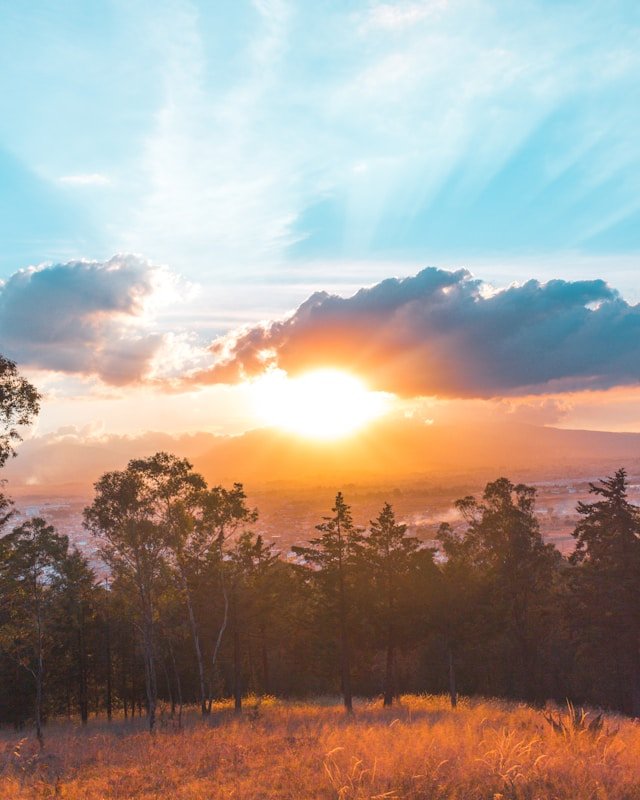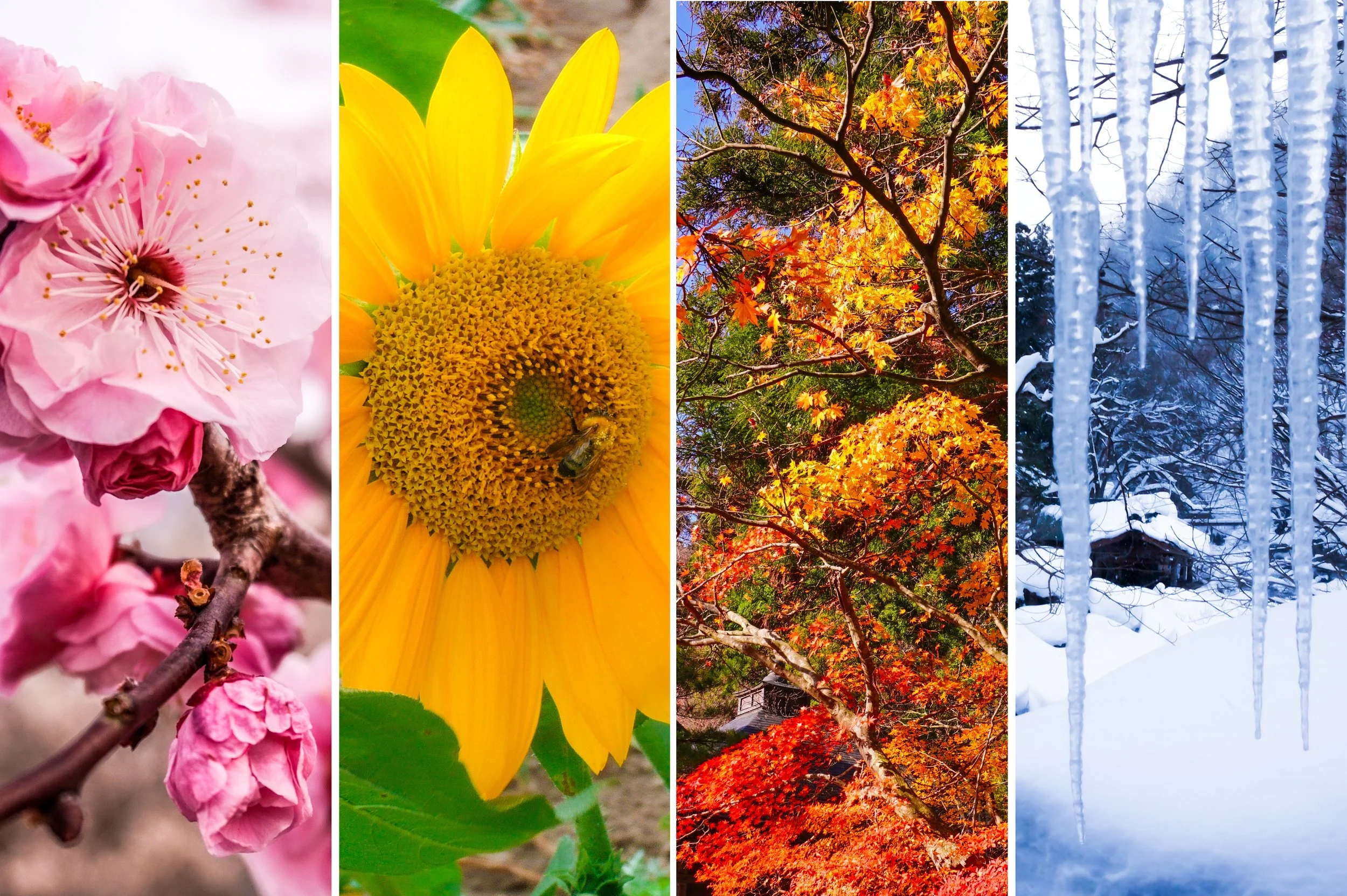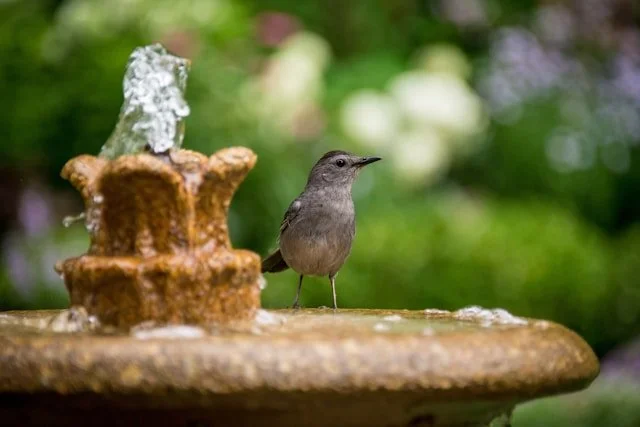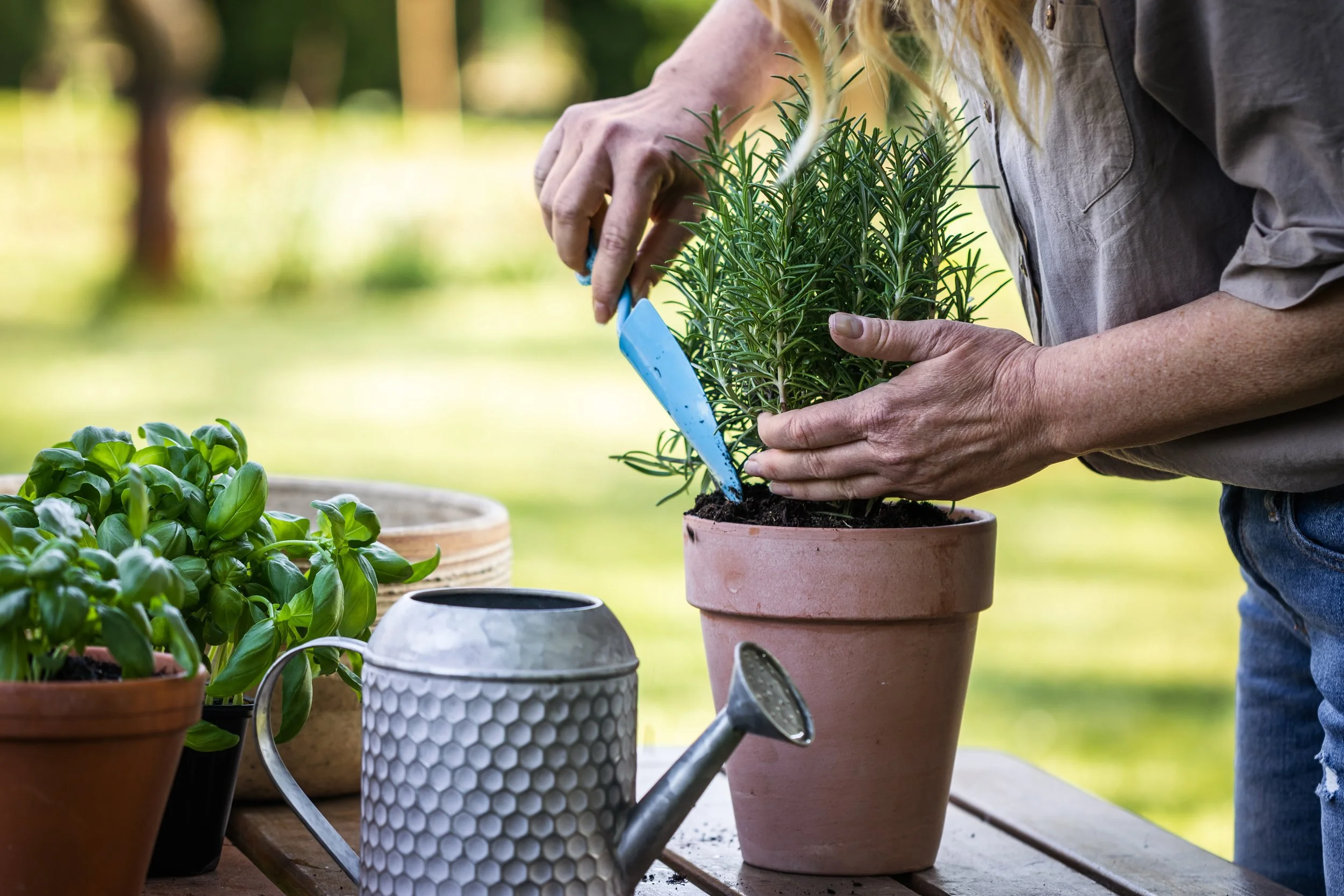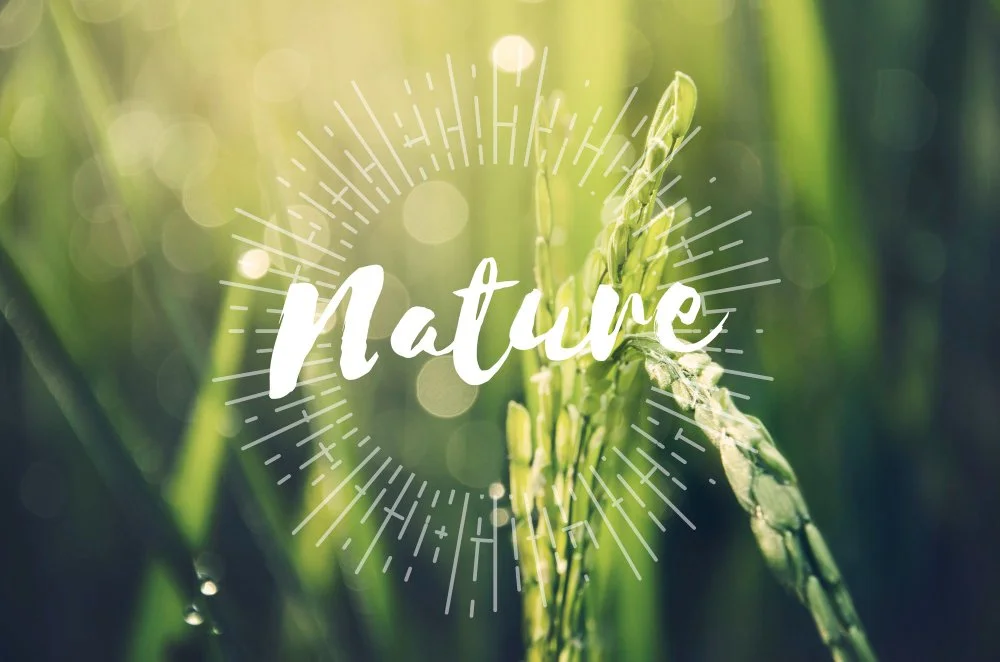Nature as Medicine: Restorative Outdoor Rituals
This morning I stepped outside barefoot to feed the animals and tend the garden. The morning air was still cool, the grass soft and dewy beneath my feet. I heard birds chattering and felt a soft breeze stirring the leaves. For a moment, standing under the apple tree next to the pond, I did nothing—just breathed. And my body remembered what it means to feel safe, grounded, and alive. <Sigh>, life is good.
In today’s fast-paced, screen-filled world, it’s easy to forget that we evolved in harmony with the natural rhythms of the outdoors. Our bodies, minds, and spirits were designed to thrive amidst fresh air, dappled sunlight, and the grounding presence of soil beneath our feet.
Instead, we often find ourselves indoors, surrounded by screens and fluorescent lighting, often hunched over keyboards, or moving rapidly between artificial environments. For many of us, this has become the norm—and it’s taking a toll leading to fatigue, stress, inflammation, and emotional burnout.
You may have noticed the subtle signs: persistent low-level stress, afternoon brain fog, or restless nights when sleep eludes you, that can pull you out of sync with your natural biology. But the good news is that restoring balance is simpler—and closer—than you might think.
The solution isn’t another supplement, restrictive diet, or intense fitness routine. It’s something far more instinctive: stepping outside and reconnecting with nature. Across cultures and centuries, people have turned to the natural world for restoration. Modern research confirms that even brief time outdoors—whether in a forest or a city park—can recalibrate an overwhelmed nervous system, improving mood, sleep, and resilience against daily stress. By cultivating intentional outdoor rituals, you can rejuvenate your energy, calm your nervous system, and rediscover a sense of joy and belonging—all without adding another task to your wellness routine.
Best of all, you don’t need to escape to a remote mountain cabin to experience these benefits. Simple, purposeful outdoor moments can reset your internal balance, reduce stress, and boost well-being—no spa day or plane ticket required. Think of it as pressing your body’s natural reset button, right outside your door.
In this post, we’ll explore how outdoor wellness rituals—like forest bathing, grounding, and gentle movement—can restore and regulate your nervous system, support sleep, ease stress, cultivate emotional balance, and reconnect you with the rhythms of the earth (and yourself).
Why Nature Works: The Science of Calm
Modern life often keeps us in a constant state of low-grade stress. Screens, noise, traffic, and decision fatigue all contribute to a subtle, persistent sense of hypervigilance. This “on edge” feeling may not always be dramatic, but over time it quietly erodes our energy, digestion, sleep, and overall sense of ease.
Nature acts as a powerful reset for our overstimulated bodies and minds. Modern science increasingly confirms what ancient wisdom has long understood: spending time outdoors is profoundly healing for the mind, body, and spirit. Time in green spaces has been shown to reduce cortisol (the stress hormone), lower blood pressure, and shift the nervous system from “fight or flight” into the restorative “rest and digest” mode. It’s within this parasympathetic state that true healing, clarity, and restoration can occur.
Our Deep Connection to the Natural World
Our need for nature isn’t simply a luxury—it’s woven into our DNA. For 99% of human history, humans lived in close relationship with the land: rising with the sun, navigating by the stars, foraging and hunting, and moving with the seasons. Our brains, nervous systems, and circadian rhythms all evolved in response to these natural cycles. This biophilic tendency—our innate drive to connect with nature—is hardwired into us. For thousands of years, tuning in to the rhythms of the world around us was key to our survival, and our bodies still respond positively to these cues today.
Nature also serves as a gentle teacher, reminding us that change and imperfection are natural parts of life. Trees lose their leaves, rivers change course, and flowers bloom and fade. Being present in these environments can soften our drive for control, helping us accept the ebb and flow of our own lives—whether we are in a season of growth, rest, or renewal.
Most importantly, the benefits of nature aren’t limited to a one-time vacation or fleeting escape. By making regular outdoor rituals part of your routine, you establish a steady rhythm of nervous system repair and mental clarity. It’s not escapism—it’s a way of coming home to yourself.
The Nervous System: Basics and Why Restoration Matters
Our nervous system is the body’s command center, constantly working behind the scenes to keep us balanced and responsive to our surroundings. At the heart of this system is the autonomic nervous system, which has two main branches:
Sympathetic nervous system: Often called “fight or flight,” this branch prepares us for action. It’s what kicks in during stressful situations—think of your heart racing before a big presentation or when you hear a sudden loud noise.
Parasympathetic nervous system: Known as “rest and digest,” this branch helps the body relax, recover, and restore itself after stress. It slows the heart rate, aids digestion, and supports healing.
In the pace of modern life, with constant notifications, busy schedules, and everyday stresses, many of us get stuck in that sympathetic “on” mode. Over time, this can leave us feeling anxious, tense, or burnt out, and our bodies don't get the downtime needed for true rest or repair.
Stepping into a green, living space triggers almost instantaneous physiological changes. Your heart rate slows, cortisol levels drop, and breathing deepens. Sunlight on your skin prompts the production of vitamin D, which supports bone health, immune function, and mood regulation. Even the simple sounds of birdsong and rustling leaves activate the parasympathetic nervous system, promoting relaxation and recovery.
The Power of Sensory Immersion
Natural environments offer a sensory richness that simply can’t be found indoors. The shifting sunlight through leaves, subtle changes in air temperature, and earthy scents all engage your senses, drawing your attention away from anxious thoughts and into the present moment. Over time, these moments of sensory immersion accumulate, fostering greater emotional resilience and mental clarity.
Nature's multisensory impact affects your physical body as well. The scent of pine or the earthy aroma after rain stimulates the limbic system, the part of your brain linked to emotion and memory. Exposure to natural sunlight helps regulate hormones such as cortisol and melatonin, which are crucial for managing stress, mood, and sleep. Walking barefoot on grass or sand allows your body to absorb free electrons from the earth, potentially reducing inflammation and restoring natural electrical balance. Even the color green has been shown to calm the mind and enhance focus.
In short, nature helps us find our off-switch. It’s a natural, accessible way to support the nervous system, helping us return to a place of balance, rest, and well-being—no special skills or scientific knowledge required. Just step outside, tune in to your senses, and let the natural world do the rest.
The Case for Outdoor Rituals
Rituals bring structure and deeper meaning to our daily lives. Unlike simple habits that are performed automatically without thinking, rituals are intentional acts that transform ordinary moments into something meaningful and grounding. When these rituals happen outdoors, they connect you not only with yourself but also with the larger rhythms and cycles of the natural world.
You don’t need hours of free time or access to untouched wilderness to experience the benefits. A city park, a small backyard garden, or even a balcony with a few potted plants can serve as your personal sanctuary. The secret lies in consistency and presence—showing up fully and without hurry, even if it’s just for 10 to 15 minutes a day.
What makes outdoor rituals truly special is their flexibility. You can adapt them to the changing seasons, your current mood, or your specific needs. They can offer calm and relaxation when you need to unwind, provide a refreshing burst of energy when you’re feeling fatigued, or help ground you when life feels chaotic. By making these simple, mindful moments a regular part of your day, you create a steady source of balance and connection that supports your well-being.
Rituals That Restore: Try These Outdoor Practices
Now that we understand the power and purpose of outdoor rituals, the next step is to explore some simple, enjoyable practices you can try. These rituals are designed to help you cultivate presence, reconnect with nature, and nurture your well-being—no matter where you are or how much time you have. Whether you’re seeking calm, energy, or grounding, experimenting with these activities can help you find what resonates best with your lifestyle and needs.
Let’s dive into a variety of outdoor rituals to inspire your own mindful practice.
Ritual #1: Forest Bathing (Shinrin-Yoku): Immersing Yourself in Nature’s Energy
Forest bathing, or shinrin-yoku, began in Japan in the 1980s as a public health initiative, but its roots go back much further in human history. It’s not about hiking for exercise or identifying plant species — it’s about slowing down, opening your senses, and letting the forest “wash over” you.
Research on forest bathing shows reductions in blood pressure, heart rate, and stress hormones, along with improvements in mood and immune function. The effect comes not just from the calming scenery, but also from exposure to phytoncides — antimicrobial compounds released by trees that can enhance immune cell activity.
How to begin:
Find a wooded area, nature trail, or even a tree-lined neighborhood street.
Walk slowly and deliberately, paying attention to your senses.
Notice the texture of bark under your fingers, the layers of sound around you, the way light filters through leaves.
Pause often. This is not exercise; it’s presence.
You don’t need to “do” anything else. You might spend 15 minutes or an hour. There’s no “goal,” and that’s the point. The forest — or any green space — is the healer. The more often you visit, the deeper your connection will grow.
Interestingly, you don’t need to go outside to get this effect. Studies show that simply looking at photos and videos of nature helps relax too.
Ritual #2: Grounding (Earthing): Reconnecting Through the Earth
Grounding, also called earthing, is the practice of physically connecting your body to the earth. It might sound a bit woo, but there’s real science behind it. Grounding involves direct skin contact with the Earth’s surface, usually by walking barefoot on grass, sand, soil, or even unsealed stone. Modern living often insulates us from this contact — we wear rubber-soled shoes, live in high-rises, and spend our days on manufactured flooring. By removing those barriers, grounding allows your body to “reset” in subtle but powerful ways.
The practice draws on the idea that our bodies naturally exchange electrons with the Earth, which can help stabilize biological systems. Some studies suggest that direct skin contact with the earth’s surface helps regulate circadian rhythms, reduce inflammation, improve sleep, and balance cortisol levels. Try it while you read, nap, meditate.
Ways to ground:
Stand barefoot in your yard while sipping your morning tea.
Take your shoes off at the beach and walk slowly along the shoreline.
Lie down on a blanket in a park and let your skin touch the ground.
Pull weeds or press the garden soil with your bare hands
Touch the leaves and flowers of plants (bonus points for inhaling their scent!)
Even a few minutes can create a surprising shift in mood and energy. For many people, grounding feels like an instant “reset button” for the nervous system.
💡Tip: Morning grounding sessions in natural light help regulate melatonin for better sleep.
Ritual #3: Five-Senses Meditation Outdoors: Awakening Presence
The outdoors stimulates the senses and can activate body systems to improve mood and emotional regulation. The five-senses outdoor nature meditation practice works well when your mind feels scattered or overwhelmed. Use it to center yourself, connect with your surroundings, and relax your mind and body. It can be done walking, sitting, or standing.
Try this:
Step outside, close your eyes, and take a few breaths.
Begin your meditation and deliberately engage each sense:
5 things you see that you may not usually notice like bugs flying in the air or cloud shadows.
4 things you feel such as smooth rocks or the wind in your hair.
3 things you hear like rustling leaves, trickling water, or bird songs.
2 things you smell like tree blossoms or wet earth.
1 thing you taste (or want to) such as raspberries or salty ocean air.
It’s simple, and you’ll feel more centered in just a few minutes.
Ritual #4: Sunrise and Sunset Rituals: Aligning with Natural Rhythms
Our ancestors lived by the natural clock of light and dark. Today, exposure to artificial light — especially in the evening as we are more sensitive to light at night than we are during the middle of the day. — disrupts our circadian rhythms, which affects sleep, metabolism, and hormone balance. One of the simplest ways to restore that rhythm is to greet the sun in the morning and watch it fade in the evening.
The rising and setting of the sun are some of the most reliable markers in nature, and aligning your daily rhythms with them can have profound effects on your energy, sleep, and mood. Morning sunlight exposure helps regulate your circadian rhythm — your body’s internal clock — by signaling to your brain that it’s time to be alert and active.
Evening light, on the other hand, signals the winding down process, preparing your body for rest. Watching a sunrise or sunset can also become a meditative practice, offering a sense of awe and gratitude that sets the tone for your day or evening.
Morning ritual: Step outside within 30 minutes of waking. Face the sun (or where it’s rising) with eyes open (without looking directly at it)— no sunglasses — and simply breathe for a few minutes. Bring your tea or coffee and simply observe.
Evening ritual: Watch the sky change colors at sunset. Notice the shift in light and temperature during this golden hour. Let the fading light signal to your body that rest is coming.
For both rituals, aim for 5-10 minutes on a sunny day and 15-20 minutes on a cloudy day. This daily rhythm tells your body when to be alert and when to wind down, making everything from digestion to mood more balanced. Use this time to reflect or set intentions for the next part of your day.
Ritual #5: Seasonal Observation Walks: Noticing Nature’s Subtle Shifts
Walking, as we know, has numerous health benefits and it contributes significantly to the longevity of residents of Blue Zones, regions of the world with the highest concentration of centenarians. Instead of walking purely for fitness though, seasonal observation walks invite you to notice how nature changes throughout the year.
Choose a favorite outdoor spot and visit it regularly—maybe once a week or at the start of each new season. As you walk, look for signs of change: new buds in spring, the fullness of summer leaves, the colors of autumn, or the quiet of winter.
By tuning in to these details, you strengthen your sense of place and belonging. You also start to notice that nature, like life, moves in cycles — a gentle, calming reminder during times of change or uncertainty.
Research suggests that blue spaces can improve our mental well-being in two ways: by reducing anxiety and mental fatigue, and by fostering a deeper sense of connection to nature. They often provide more opportunities for physical activity and being with other people, both of which lead to better health.
The BlueHealth research initiative collected data across 18 countries in the EU studying the impact of blue spaces on public health and well-being. Their findings are being used by decision-makers to bring positive changes to urban areas.
Ideas:
Visit a local beach or lakeshore and walk or swim.
Sit by a fountain or koi pond with a journal.
Let running water flow over your hands while focusing only on the sensation.
Walk along a stream in the woods.
Water invites you to release what you no longer need, mentally and emotionally.
Ritual #7: Nature Journaling: Capturing Nature’s Story
Nature journaling is the practice of observing and recording details about the natural world, often through a combination of writing, sketching, painting, or even using photography or audio recordings to capture observations.
Take a notebook, sketchpad, or camera outdoors. (If you use your phone, be sure it is in airplane mode.) Sit quietly and note what you see, hear, smell, feel, or taste. Record your thoughts, emotions, or nature observations—this gentle self-inquiry nurtures emotional clarity and resilience.
Ritual #8: Mindful Gardening: Cultivating Wellness from the Ground Up
Gardening isn’t just about growing vegetables or flowers — it’s a hands-on, sensory-rich way to connect with the earth. Studies show that gardening can reduce symptoms of depression and anxiety, boost self-esteem, and even improve concentration. In fact, therapeutic gardens have been used in hospitals for thousands of years and were strongly supported by Florence Nightingale!
Tending to plants requires presence. You notice the soil’s texture, the smell of herbs when you brush against them, the small changes in leaves and stems over time, the bugs and critters inhabiting the space. It’s a dialogue between you and nature — one that rewards patience and care.
How to try it:
Start small with herbs on a windowsill or a few pots on a balcony.
Choose plants you enjoy touching, smelling, or tasting.
Make watering and tending a daily ritual, not just a chore.
Don’t be afraid to talk to your plants, the sound waves actually help them grow.
How to Make Outdoor Rituals Part of Your Life
Start small. Begin with 5–10 minutes outdoors daily and let the habit grow.
Tie it to an existing habit. Drink your morning coffee outside, take calls while walking, or stretch in the backyard after work.
Make it non-negotiable. Treat it like brushing your teeth — a must-do, not an “if I have time.”
Ditch the Tech. Leave devices indoors to break the cycle of digital stimulation.
Adapt with the seasons. Embrace cooler-weather rituals like stargazing or autumn walks, and warmer-weather practices like sunrise grounding.
Stay curious. Approach each ritual with fresh eyes.
And most importantly, let it be nourishing, not another task on your to-do list.
Nature Helps You Come Home to Yourself
Simple outdoor rituals can gradually shift how your body and mind respond to stress. With time, you may find that challenges feel more manageable, sleep comes more naturally, and your energy feels steady and renewed. These moments outside heighten your awareness—of yourself and of the natural rhythms that quietly support life. The beauty is that they require no money, special gear, or technology—only your presence and a willingness to slow down. Nature doesn’t just heal; it reminds you of who you are.
The Bigger Picture
Engaging with the Earth through daily or weekly rituals reconnects you to your inner rhythms, creativity, and vitality. It’s not about escaping life’s demands—it’s about returning to them with greater clarity, energy, and joy. This connection creates a ripple effect, shaping your health, your relationships, and even your choices that benefit the planet.
The Long-Term Payoff
While nature can’t erase life’s stress overnight, it lays a foundation for resilience. Over time, the benefits—better sleep, a calmer mind, improved mood, stronger immunity, and clearer thinking—touch every area of your life. Think of time outdoors as an essential nutrient, just like water or nourishing food. Don’t go too long without the grounding presence of green spaces, fresh air, and natural light.
Closing Thoughts and Encouragement
Start small. Step outside, take a slow walk, or rest beneath a tree. Nature’s medicine is free, accessible, and validated by both tradition and science. Whether you seek relief from stress or simply want to feel more alive, gentle outdoor rituals can restore your nervous system—and remind you of your place in the world’s unfolding beauty.
Let’s get cooking!
It’s been hot this week so salads have been the go to meal. It’s been easy prep and an indulgence getting fresh veggies from the garden along with cooked beans and grains from the freezer. Often I’ll use a splash of red wine vinegar, extra virgin olive oil, fresh basil, and a shake of salt and pepper to dress them. When I’m in the mood for something a bit more complex I head to the recipes I’m sharing below. Try them - they’re delish!
Kefir Caesar Dressing
Give your Caesar salad a nourishing upgrade with this Kefir Caesar Dressing—a creamy, tangy, and probiotic-rich twist on the classic! Instead of mayo, we’re blending ripe avocado with kefir for a luxuriously smooth texture and a boost of gut-friendly goodness. Packed with healthy fats, protein, and bold Caesar flavors, this dressing is not only delicious but also incredibly nutritious.
Drizzle it over crisp romaine, use it as a dip, or even spread it on sandwiches for a fresh, zesty kick!

Kefir Caesar Dressing
Ingredients
- 1 cup whole milk plain kefir
- 1/2 avocado, peeled and deseeded
- 2 anchovy fillets (or 1 tsp anchovy paste)
- 2 cloves garlic, mashed
- 2 tbsp fresh lemon juice
- 1 tbsp Dijon mustard
- 1/2 tsp Worcestershire sauce
- 1/3 cup parmesan cheese
- 1/4 tsp salt
- 1/4 tsp black pepper
Instructions
- Blend all ingredients in the blender until creamy. Alternatively, whisk them together in a bowl after mashing the avocado with the anchovies and garlic.
- Store in an airtight container in the refrigerator, giving it a good shake or stir before using.
Notes
- If the dressing is too thick, you can thin it out with a small amount of water or additional lemon juice until it reaches your desired consistency.
- For a little heat, consider adding a pinch of cayenne pepper or harissa seasoning.
Zesty Harissa Citrus Vinaigrette
Bright, zesty, and just the right amount of bold—Harissa Citrus Vinaigrette wakes up anything it touches. Fresh orange and lime juice bring a sunny citrus punch, while harissa spice adds a gentle heat that lingers. Dijon mustard and vinegar balance the flavors with tang and depth, and fresh cilantro rounds everything out with a vibrant, herbal finish.
Drizzle it over salads, grain bowls, grilled veggies, or seafood for a taste that’s as energizing as a warm breeze on a summer afternoon.
Harissa Citrus Vinaigrette
Ingredients
- 1/2 cup orange juice
- zest and juice of 2 limes
- 2 tbsp dijon mustard
- 2 tbsp vinegar, apple cider or red wine
- 2 tsp honey
- 2 tbsp extra virgin olive oil
- 1/4 tsp garlic powder
- 1 1/2 tsp harissa powder (or chili powder)
- 2 tbsp fresh chopped cilantro
- salt and pepper to taste
Instructions
- Place all the ingredients in a small bowl and whisk until blended. Adjust seasoning to taste.
Notes
- Store in a sealed jar in the refrigerator for up to 5 days. Shake well before using, as natural separation may occur.
Creamy Basil-Balsamic Dressing
Creamy Basil-Balsamic Dressing is bright, herbaceous, and lusciously smooth, blending the sweet tang of balsamic vinegar with the freshness of just-picked basil. Greek yogurt or kefir gives it a velvety texture and gentle tang, while olive oil adds depth and richness.
Drizzle over leafy greens, zucchini ribbons, or roasted vegetables; spoon onto grilled chicken or fish; toss with pasta for a quick cold salad; or serve as a dipping sauce with crusty bread and fresh vegetables.
Creamy Basil-Balsamic Vinaigrette
Ingredients
- 1/3 cup plain Greek yogurt or kefir (unsweetened)
- 1/4 cup fresh basil leaves, packed
- 2 tbsp extra virgin olive oil
- 2 tbsp balsamic vinegar
- 1 tsp Dijon mustard
- 1 small garlic clove, chopped
- 1–2 tsp honey or maple syrup (optional, to taste)
- Salt and black pepper, to taste
Instructions
- Combine all the ingredients in a blender or small food processor and blend until smooth and creamy. Adjust seasoning to taste.
Notes
- Store in a sealed jar in the refrigerator for up to 5 days. Shake well before using, as natural separation may occur.
There you have it!
Sometimes the simplest moments outdoors invite us to pause and reconnect. Trust in nature’s rhythm to guide you toward calm and healing.








